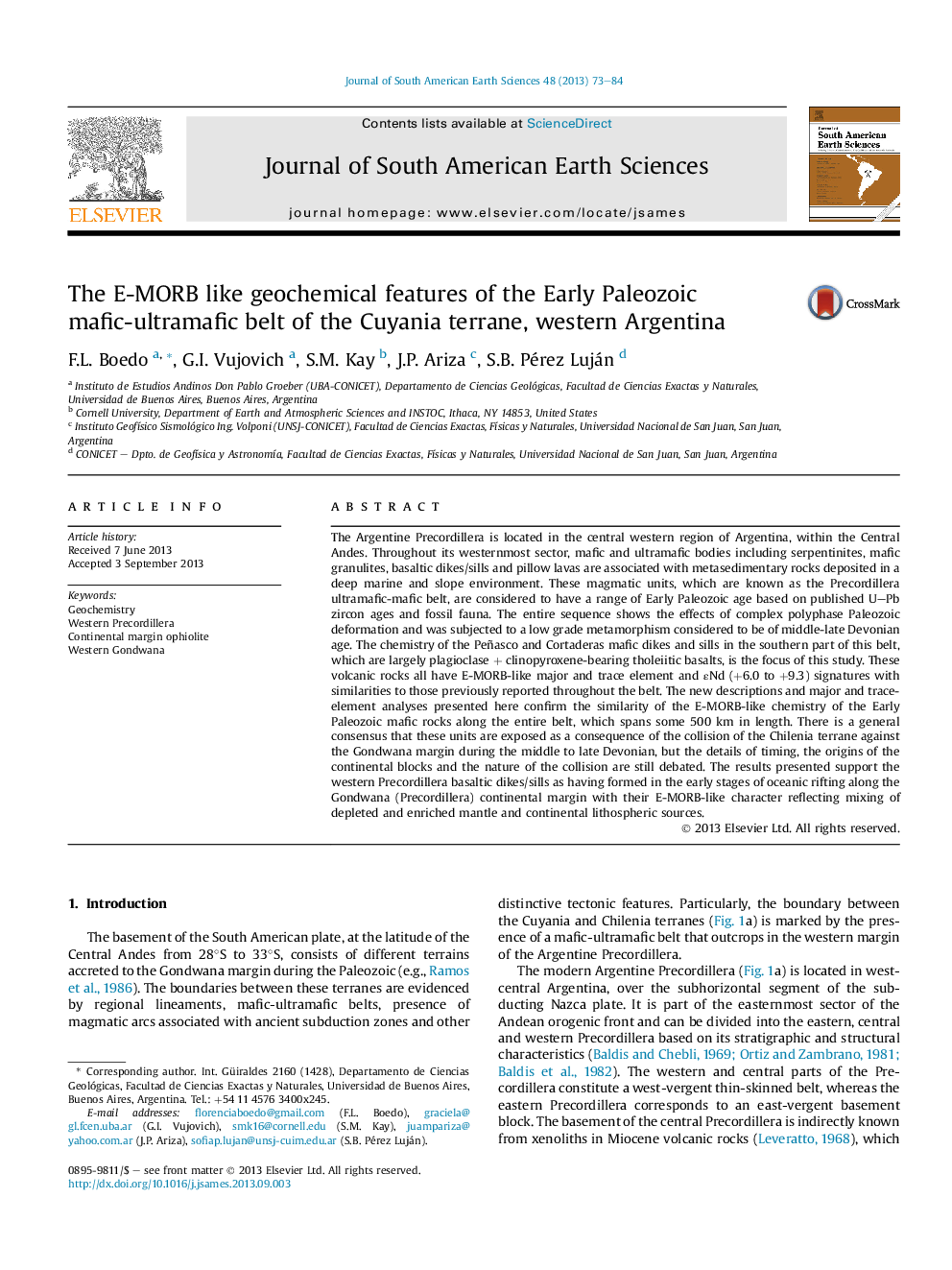| Article ID | Journal | Published Year | Pages | File Type |
|---|---|---|---|---|
| 4682372 | Journal of South American Earth Sciences | 2013 | 12 Pages |
•We present new geochemical data from the Precordillera mafic-ultramafic belt.•The mafic rocks from the studied areas are tholeiitic basalts with E-MORB signature.•Mafic rocks along the belt are tholeiitic basalts with similar geochemical signature.•These similarities suggest a common tectonomagmatic origin.•These rocks could have formed in early stages of rifting along the Gondwana margin.
The Argentine Precordillera is located in the central western region of Argentina, within the Central Andes. Throughout its westernmost sector, mafic and ultramafic bodies including serpentinites, mafic granulites, basaltic dikes/sills and pillow lavas are associated with metasedimentary rocks deposited in a deep marine and slope environment. These magmatic units, which are known as the Precordillera ultramafic-mafic belt, are considered to have a range of Early Paleozoic age based on published U–Pb zircon ages and fossil fauna. The entire sequence shows the effects of complex polyphase Paleozoic deformation and was subjected to a low grade metamorphism considered to be of middle-late Devonian age. The chemistry of the Peñasco and Cortaderas mafic dikes and sills in the southern part of this belt, which are largely plagioclase + clinopyroxene-bearing tholeiitic basalts, is the focus of this study. These volcanic rocks all have E-MORB-like major and trace element and εNd (+6.0 to +9.3) signatures with similarities to those previously reported throughout the belt. The new descriptions and major and trace-element analyses presented here confirm the similarity of the E-MORB-like chemistry of the Early Paleozoic mafic rocks along the entire belt, which spans some 500 km in length. There is a general consensus that these units are exposed as a consequence of the collision of the Chilenia terrane against the Gondwana margin during the middle to late Devonian, but the details of timing, the origins of the continental blocks and the nature of the collision are still debated. The results presented support the western Precordillera basaltic dikes/sills as having formed in the early stages of oceanic rifting along the Gondwana (Precordillera) continental margin with their E-MORB-like character reflecting mixing of depleted and enriched mantle and continental lithospheric sources.
